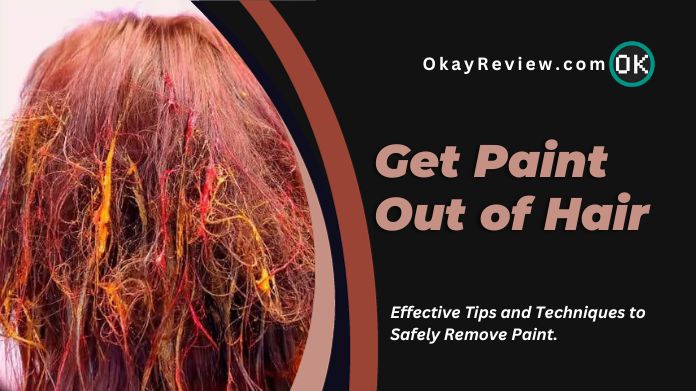If you’re adding a splash of color to a room or diving into a creative art project, paint has a sneaky way of ending up where it shouldn’t – like in your lovely locks.
But before you panic or reach for the scissors, take a deep breath. There are several friendly and effective methods to tackle this colorful dilemma.
From everyday household items to more potent solutions, this OkayReview guide will walk you through how to get paint out of hair without causing any damage.
So, if you’ve had a little paint mishap, don’t fret! We’ve got your back (and your hair) covered.
Discover the simple steps to restore your hair to its paint-free glory!
Table of Contents
How to Get Paint Out of Hair Using Simple Techniques?
With the below few simple techniques, you can quickly learn how to get paint out of hair without any fuss.
From using household items to gentle combing, restoring your hair to its natural state is simpler than you might think!
1. Scrape It With Your Fingernails
One of the easiest ways to tackle this is by using your fingernails. Grab the painted strand and gently scrape off the paint using your nails.
It’s a natural and quick method, especially if the paint needs to dry thoroughly. This technique is a handy first step in figuring out how to get paint out of hair without using fancy tools. Just be patient and gentle to avoid any hair damage.
2. Comb It Out Gently
One of the easiest ways to tackle this is to comb it out gently. Grab a comb suitable for your hair type. If the paint is still wet, it’ll be more accessible. Gently comb through the painted section, being careful not to pull.
With patience, you’ll see how to get paint out of hair without causing any damage. Remember, slow and steady does the trick!
3. Soak Your Hair in Warm Water
This method is convenient for water-based paints. Take a bowl of warm water and submerge the painted hair sections briefly.
Gently rub the area, and you’ll see the paint loosen up. This is a gentle and effective way to learn how to get paint out of hair without fuss.
How to Get Paint Out of Hair Using Natural Remedies?
Natural remedies might be your best bet! From kitchen staples to everyday items, discover nature’s solutions to effectively get paint out of your hair without using harsh chemicals.
1. Coconut Oil, Baby Oil, or Vegetable Oils
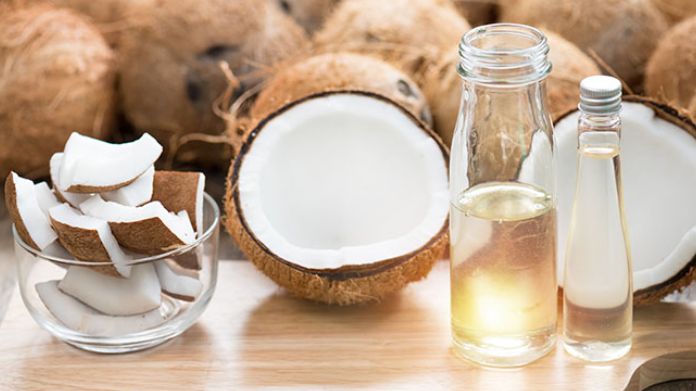 Coconut oil, baby oil, or even vegetable oils can be your saviors. These oils can soften and break down the paint, making it easier to slide out of your hair.
Coconut oil, baby oil, or even vegetable oils can be your saviors. These oils can soften and break down the paint, making it easier to slide out of your hair.
Apply a generous amount to the painted strands, let it sit briefly, and gently comb through. It’s a natural and effective way to discover how to get paint out of hair without any chemicals.
You can also use brake fluids to get paint out of your hair. These fluid marvels are more than simply a safety net.
2. Shampoo, Dish Soap, or Toothpaste
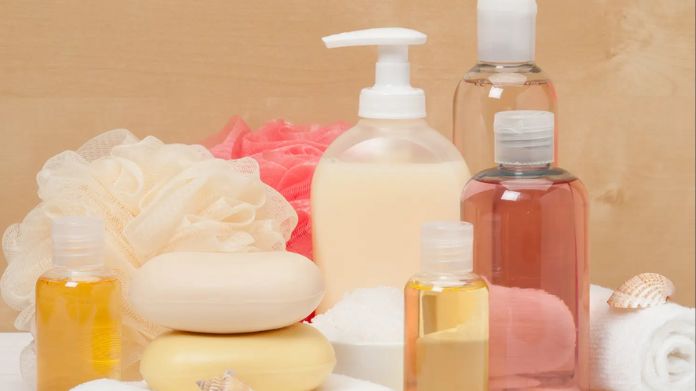 Regular shampoo, dish soap, or even toothpaste can be rescued. These everyday items can help break down the paint and wash it away.
Regular shampoo, dish soap, or even toothpaste can be rescued. These everyday items can help break down the paint and wash it away.
Apply your chosen product to the affected area, gently massage, and rinse. It’s a straightforward approach how to get paint out of hair using things you likely have at home.
3. Apple Cider Vinegar for a Natural Cleanse
 Apple cider vinegar might be the natural solution you’re looking for. This kitchen staple is not just for salads; it’s a gentle cleanser that can help dissolve paint residues.
Apple cider vinegar might be the natural solution you’re looking for. This kitchen staple is not just for salads; it’s a gentle cleanser that can help dissolve paint residues.
To use, dilute some apple cider vinegar with water, apply it to the painted strands, and let it sit for a few minutes. Rinse thoroughly, and you’ll see how to naturally get paint out of hair.
4. Effectiveness of Peanut Butter
 Peanut butter, with its oily texture, helps remove paint from hair. The oil in peanut butter helps dissolve the paint, simplifying the removal process.
Peanut butter, with its oily texture, helps remove paint from hair. The oil in peanut butter helps dissolve the paint, simplifying the removal process.
To utilize this method, spread a good amount onto the painted section, rub it softly, and let it settle briefly. Rinse and discover the magic of how to get paint out of hair with peanut butter.
How to Get Paint Out of Hair When All Else Fails?
When conventional methods don’t do the trick and that stubborn paint still clings to your hair, it’s time for stronger solutions.
Always remember to use these methods with care, ensuring the safety and health of your hair and scalp.
1. WD40
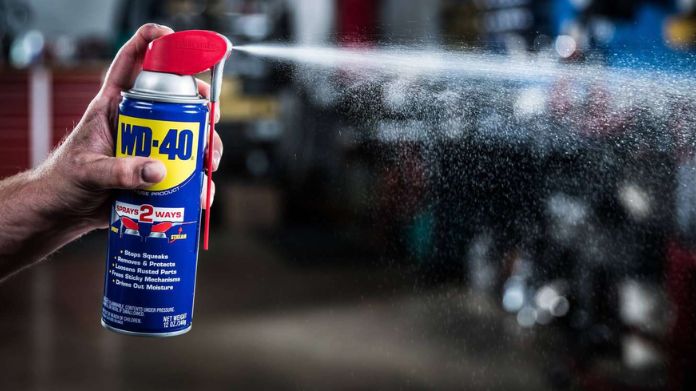 When paint stubbornly clings to your hair, WD40 might come to mind as a solution. While it’s known for tackling tough stains, using WD40 on hair requires caution.
When paint stubbornly clings to your hair, WD40 might come to mind as a solution. While it’s known for tackling tough stains, using WD40 on hair requires caution.
This lubricant can help dissolve paint, but applying it only to the affected strands is essential, avoiding the scalp. After application, wash your hair thoroughly with shampoo to ensure no residue remains.
It’s a powerful approach to getting paint out of hair, but always prioritize your hair and scalp’s health.
2. Paint Thinner, Turpentine, or Mineral Spirits
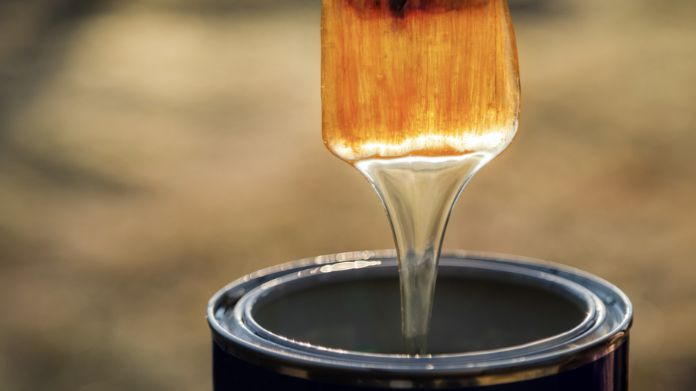 When paint proves to be a stubborn guest in your hair, you might consider stronger solutions like paint thinner, car wax products, turpentine, or mineral spirits.
When paint proves to be a stubborn guest in your hair, you might consider stronger solutions like paint thinner, car wax products, turpentine, or mineral spirits.
These agents can effectively dissolve paint, but they come with a word of caution. Due to their strong nature, using them with care is vital.
Dab a small amount onto the painted strands utilizing a cloth, avoiding direct contact with the scalp. After the paint loosens, wash your hair thoroughly with shampoo.
Conclusion
Getting paint out of your hair might seem daunting, but it’s entirely doable with the right techniques and remedies.
Always start with the gentlest methods and work your way up if needed. And remember, prevention is better than cure.
The next time you paint, consider wearing a protective cap or tying your hair back to avoid mishaps.
Frequently Asked Questions
Q. Is Using Chemicals Like WD40 or Paint Thinner on Hair is Safe?
Ans. While chemicals like WD40 or paint thinner can effectively remove paint, they can be harsh on the hair and scalp. It’s essential to use them sparingly and ensure thorough washing afterward.
Q. Can Regular Shampooing Remove Paint From Hair?
Ans. Regular shampooing can help remove water-based paints. However, you might need to use other oil-based paints or stubborn residue methods.
Q. What Precautions Should I Take When Using Harsh Chemicals on My Hair?
Ans. Always use chemicals sparingly and apply only to the painted area. Avoid contact with the scalp, and ensure thorough washing afterward to remove any residues.

